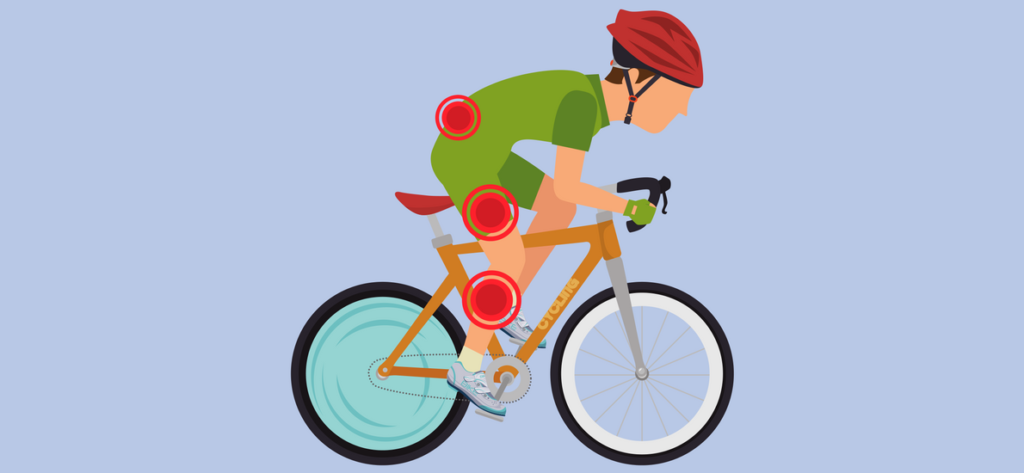Cramps. They are the death of every cyclist.
We have enlisted the help of Physiotherapist, Sean McCoola from Maximize Health Group to give us some tips on how to better manage cramps.
Sean brings experience to his clients from 18 years as a physiotherapist and has a particular interest in sporting teams and rehabilitation programmes.
Sean sat down with us earlier this month to give us his top 4 tips on stopping cramps.
Take it away Sean.
4 Factors to Help Stop Cramps
At Maximize Health we are often asked by the cyclists we treat about cramps and how to stop them.
Below is a discussion and guide to what we have seen work over the years. The simple reminders below will enhance performance and aid general well-being and if you fit the pieces of the puzzles together for you, it may even stop cramps for your cycling endeavours.
Studies have shown that cramps are associated with high intensity activity and muscle fatigue. Yes, no proverbial Sherlock!
This directs you in the first instance to get your training and race plans suited to you and your current sustainable exertion level. And then address other factors below including hydration, stretching, electrolyte balance and nutrition which are often quoted as areas to address to avoid the possibly devastating effects of cramping while out on the bike (e.g poor race performance, pushing the bike home), or after the event/training (jack knifing in the car when driving home from the charity ride).
My advice is to increase your awareness of when the cramps occur for you and then experiment with the factors leading up to the occurrence.
Sorry guys and gals there are often no quick and easy answers for the road warriors.
1. Hydration
Hydration continues to be a major topic in the discussion of cramps. I take a wide gauge view at this and recommend that appropriate hydration needs to be an everyday activity especially if training loads are high and frequent and when coming into summer months and/or humid conditions. Some cyclists are heavy sweaters, and this loss in fluid is often associated as a major contributing factor to cramps.
Experiment
Weigh yourself before and after a one hour ride.
If you weigh less afterwards you may need more fluid intake.
If you weigh more, maybe you’ve gone too hard on the sports drink.
Hydration levels are imperative for optimal performance and getting this part of the puzzle to fit for you may also reduce cramps.
2. Stretching
Another risk factor for cramping demonstrated in studies is low or irregular rates of stretching.
Don’t get too hung up on the bio-physiology but go by the rule that if muscles are tight (shorter than optimal resting position) and/or if they have trigger points (localised areas of increased muscle firing that resets and increases the resting tone of the whole muscle), this seems to increase the chance of cramping.
Optimal muscle length will also reduce discomfort and improve performance. Winning all round! Unfortunately some riders will just have to stretch and address trigger points more than others.
Tip 1
Stretch each offending muscle group for a minimum of 2 x 30 seconds.
For muscles that have increased tone such as calves stretch for at least 1 minute.
Complete this process 3 - 5 days a week.
Tip 2
Try trigger point work or foam rolling to get optimal results
3. Electrolytes or Die
We all need electrolytes to maintain correct muscle function to help maintain life as we know it.
There is little scientific evidence stating that electrolyte levels play a significant role cramping.
Optimal electrolyte balance may assist in cramp prevention, but how much is enough?
Once again this will come down to experimentation for individuals. Test the various input options (Drinks, gels, salt tabs or food) for brand, concentration levels, timing etc.
There are now companies doing sweat tests for the salt/sodium levels in your sweat. But a general guide is if you have the white ring or streaks around your neck on your jersey after you ride you are possibly sweating out electrolytes, including, sodium/salt in higher than optimal levels, and this may need to be addressed.
4. Nutrition
What we put into our bodies leading up to and on race/training days may affect cramping incidence.
A balanced diet must help performance and general health and well-being. “Balanced” will mean different things to the individual and depend on physical and even mental load.
I believe the overall and longstanding aim is for you to give yourself the right amount of energy to fuel your body for tasks you are giving It, in acceptable input formats to promote continued health to train at your desired increased intensities for longer.
Tip 3
Nutrition, like hydration, is an everyday task.
Nutrition plans should include the weeks and days before, on the day, and during the event.
As always folks, tips like these may not be fully comprehensive for your situation and seeking out a health professional is a worthwhile exercise if cramping persists and is affecting your ability to bring your 'A' game.
This discussion is by no means exhaustive and there are many other cramp prevention strategies that may work for you (my Mum swears by camphor in a sock by your feet under your bottom sheet in bed overnight to prevent calf cramps).
What we have found over the years is that if you address the above factors and fit the pieces of the puzzle to your situation it will at the very least improve your performance and enhance your health and well-being.
Now on your bikes and enjoy.
Thanks Sean. Stay tuned next month for another article from Maximize Health Group.
In the meantime, if you have any questions regarding these tips, prevention of cramps or other health issues please do not hesitate to contact Sean on +61 7 3343 5494 or [email protected].

